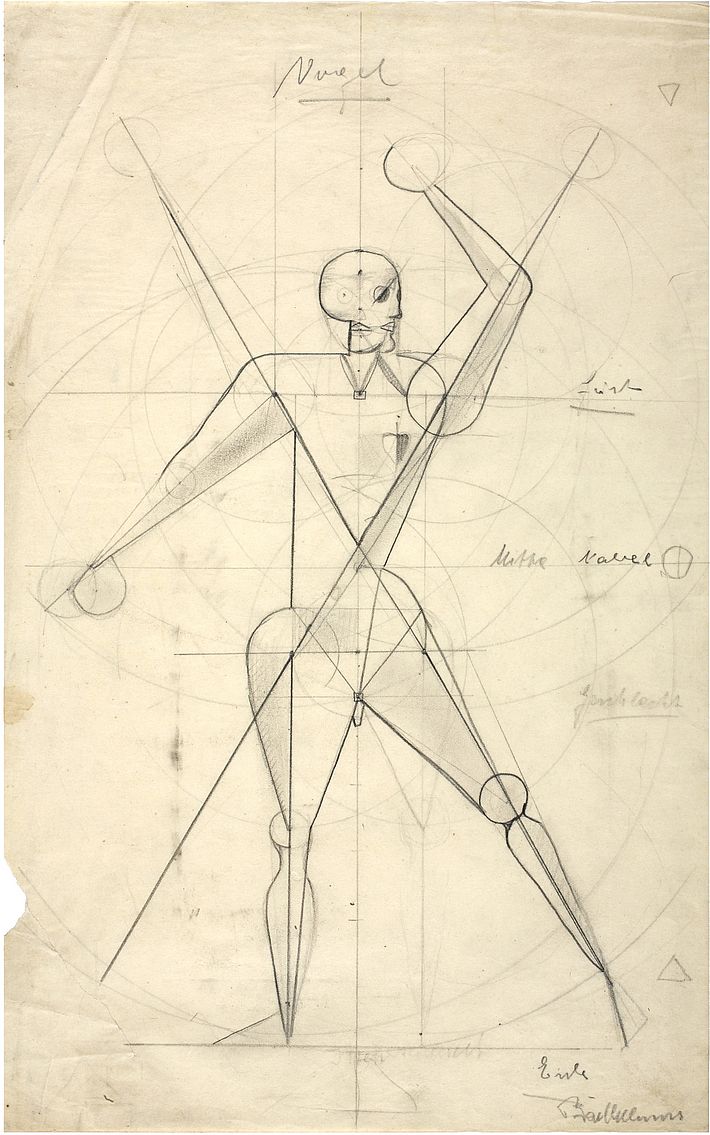The human being
1928–1929
By 1928 Schlemmer had developed his course on “the human being”, which broke down into a formal, a biological and a philosophical section.

Headline
Schlemmer, a versatile artist who was the head of several workshops as a master of form, grappled intently with the theory and didactics of art education. In the workshops, his teaching focused on the students’ active participation in and collaboration on practical assignments that ranged from the conceptual outline to exact blueprints and the selection and appropriate handling of materials. Collective work on large projects formed the core of training in the workshops, including the artistic decoration of the school building in 1923 and the stage productions.
Oskar Schlemmer was a master at the Bauhaus from 1921 to 1929. He was head of the following workshops: wall painting in 1922, metal from 1922 to 1923, wood and stone sculpture from 1922 to 1925 and stage from 1923. His work and his teaching revolved around the human body. He produced the Bauhaus dances, which were performed on the Bauhaus stage and elsewhere from 1926.
Based on the life drawing classes which he gave from 1921, Schlemmer developed his ‘Human being’ course up to 1928. Here, Schlemmer organised his teaching programme into three sections: formal, biological and philosophical. The graphic-formal section dealt with the theories of proportion, the laws of physical mechanics and kinetics and various representation systems and figure types in ancient and modern art. The focus of the biological section was on life drawing and included theoretical lessons on the biological, physiological and anatomical states of the body and its life functions. The philosophical section conveyed an overview of ways of thinking, ranging from antiquity to the modern age in order to elucidate aesthetic, ethical and metaphysical issues.
From 1926, he organised the so-called Bauhaus dances on the Bauhaus stage in order to systematically explore formal aspects of the stage. These included the Space dance, Flats dance, Gesture dance and Rod dance, the Block Play, the Metal dance, Glass dance, Pole dance and Hoop dance.